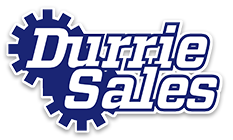If we told you there is a sales tool that is guaranteed to increase your revenue, improve your sales team’s performance, and increase your forecasting accuracy … would your salespeople adopt this tool?
You’d be surprised at how many sales teams say “no.”
According to research conducted by Harvard Business Review and others, revenue, performance and forecasting accuracy increase significantly when companies adopt a standardized sales process.
And yet a whopping 68% of salespeople don’t follow a sales process, according to Objective Management Group.
Read on to learn why adopting a documented sales process could be the most revenue-boosting decision you’ll ever make.
What is a documented sales process?
Let’s start by getting clear on our terms. A sales process is a set of steps that a salesperson takes to move a potential customer from awareness to a sale. It is the process that a sales rep uses to turn a lead into a customer.
A sales process is . . .
- Linear: A series of steps that follow one after the other in a logical sequence
- Finite: Involves a limited number of discrete steps, typically between five and seven
- Measurable: KPIs at each stage of the process measure performance
- Repeatable: Designed to be repeated with each potential customer
- Documented: Described in a written document (not found in the heads of sellers only)
As you can appreciate, the value of a documented sales process is that it helps your company be systematic in the way you prospect, engage leads, make presentations, craft proposals, follow up with prospects and plenty more.
The opposite of a sales process is an ad hoc process, assuming it can be called a process at all. In the absence of a sales process, most sales reps just wing it, treating every prospect and every opportunity differently, and doing some things with some prospects that they don’t do with others.
Now don’t get us wrong – we know your business isn’t one-size-fits all and neither are your leads and customers. There’s always room for customizing each step to best meet the unique quirks of each deal. However, a clear sales process sets up helpful guardrails for your reps to successfully navigate within.
Value of a Documented Sales Process
The primary reason to adopt a documented sales process is to improve your results: Companies that implement a sales process outperform companies that do not.
Boost performance. According to the Dealmaker Index Study, 70% of companies that follow a structured sales process are high performers.
Improve forecasting. Companies that follow sales processes report that their business forecasts are accurate in 70% of cases, according to TAS Group.
Increase revenue. A study by Harvard Business Review shows that companies that use a sales process increase their revenue by up to 28% compared with companies that do not.
Adopting a formal sales process has other benefits, of course. For one thing, it gives each member of your sales team a common language to use when talking about leads, opportunities and stages of your funnel. This prevents confusion and builds a stronger sales culture.
When you start using a documented sales process, you also discover that your sales coaching becomes more effective. Coaching individual reps is a lot more effective when every member of your team is following the same game plan.
Finally, adopting a systematic approach to selling gives you insights into your sales effectiveness (both your process and your people). Once you map out your sales process, dividing it into a set of discrete, identifiable stages, and once you assign KPIs to each stage, you quickly discover where opportunities stall in your pipeline, and why. And you also discover which of your sales reps are following the process—and which ones need some encouragement in that area.
When to Use Your Sales Process
Another advantage of formalizing and documenting your sales process is that you can use it for more than just new sales. Naturally, the most vital area of your business to use a sales process is client acquisition. Turning a stranger into a customer requires a systematic approach, one that you document, test, and improve over time.
But you should also use your sales process whenever you want to up-sell or cross-sell an existing customer and help your existing customers re-order from you.
At Durrie Sales, we are Industrial Sales Association (ISA) SalesWerks Certified. We also use a proven, eight-step sales process, which consists of the following deal stages:
Our Proven Sales Process
- Opportunity: Identify the leads who are qualified and ready to move through the rest of the pipeline.
- Presentation: Convey relevance and capability, demonstrating to prospects that your product is a contender.
- Assessment: Discover what your prospect is doing today, and the goals they want to achieve.
- Validation: Validate your prospect’s current state and discover their desired future state.
- Test/Design: Design a solution that bridges your prospect’s current state and their desired future state.
- Proposal: Demonstrate that you will deliver a solution that meets your prospect’s needs and will be a low-risk decision.
- Negotiations: Negotiate with your prospect to secure the right outcome at the right price and with the best timeline.
- Win: Win the account, and begin serving your new customer, keeping you informed along the way.
Someone once said that if you don’t know your destination, any road will take you there. In sales, you know your destination – a “closed won” deal. To get there you need a process: a systematic, logical, measurable, documented process.
Having a standardized sales process adds structure and accountability to your sales activities, leading to a higher win rate, shorter sales cycles, and a big boost in your revenue.
Considering an independent sales rep? Uncovering their process is one of six important things to look out for. Find out the other five in our useful checklist, 6 Things Manufacturers Should Look for in Independent Sales Reps.


